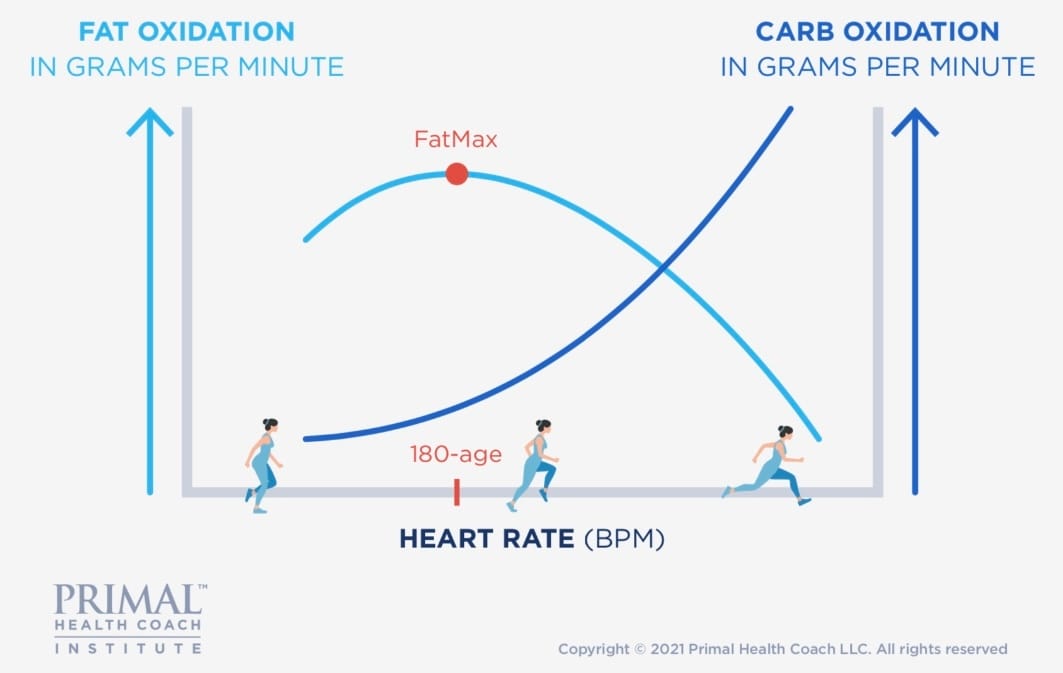
Greetings, Primals!
Back when I was much heavier, I used to think the only way to lose weight was to run hard and often—long stretches of cardio with my heart rate sky-high. I thought the key was outworking the fat with effort and sweat! But no matter how hard I pushed, the weight stuck around, and I burned out more than I burned fat!
Everything shifted when I learned about how oxygen is required to burn fat inside the mitochondria. That one insight completely changed the way I trained, moved, and recovered. Once I started training in a more oxygenated state—through walking, rucking, and aerobic work—fat loss became something I could sustain and get efficient at. It felt less like punishment and more like alignment with how my body is designed to function.
First time reading? Sign up here.

WEEKLY DEEP DIVE
Inside every cell are mitochondria, and those mitochondria need oxygen to burn fat. If oxygen isn’t present, your body shifts to burning glucose instead. This is why aerobic movement—staying in a state where oxygen is readily available—is so effective for fat loss. When you’re breathing steadily, moving rhythmically, and not pushing to the point of gasping, your body prefers to use fat as fuel.
That’s why walking, especially when done with intention, is such a powerful strategy. It’s sustainable, it doesn’t spike stress hormones, and it keeps your metabolism humming in the right direction. It may not feel intense, but biologically, it’s incredibly efficient.

In the presence of oxygen in the mitochondria, one fat molecule yields 106 units of ATP (energy for the cell). A molecule of glucose only yields around 32 ATP. Fat is the body’s preferred fuel source!
Dr. Phil Maffetone, a longtime leader in endurance and metabolic training, developed a simple formula to help you identify your aerobic threshold. Subtract your age from 180. That number gives you an estimate of your maximum aerobic heart rate—the point where you’re still using oxygen efficiently to burn fat.
For example, if you’re 42, your aerobic max heart rate is 138 beats per minute. Staying at or just below that number allows your body to stay in a fat-burning state. Go too far above it, and you cross into anaerobic territory where your body relies more heavily on glucose.

As your HR increases above your aerobic max, you burn less fat and more carbs (glucose)!
If a casual walk doesn’t get your heart rate close to your aerobic max, you can increase the challenge by wearing a weighted vest, carrying a rucksack, or walking hilly terrain. These small additions raise the intensity while still keeping you in an oxygen-rich state. It’s a smart way to build strength and cardiovascular fitness without sacrificing fat metabolism!

The Primal Takeaway
You don’t need to crush yourself in the gym every day to make progress. You need to move the way your body was designed to move! Our primal ancestors didn’t wake up and hit high-intensity intervals—they walked, they carried, they hunted, and they did it all while staying aerobic and fat-fueled.
Training in an aerobic state aligns with that design. It gives your body the chance to burn fat efficiently, repair itself, and build real metabolic resilience. Walking with load, tracking your heart rate, and staying consistent isn’t just effective—it’s how we were meant to operate. When you train this way you’re tapping into the same pathways that allowed humans to thrive for thousands of years.
Keep it PRIMAL,
Will Winston, PHC
“Our results always match our choices.”

One on One Coaching ($300.00 Monthly)
The Primal Protocol isn’t a one-size-fits-all program—it’s a personalized strategy built for your body, your goals, and your lifestyle. We start with an InBody scan to get a clear picture of your current body composition, then we map out a targeted plan to shift it—through making sure your choices moving forward are in alignment with your desired outcome.
Body Composition Analysis ($50.00 per analysis)
Discover your body’s unique makeup with a Body Composition Analysis — a comprehensive scan that provides deep insights into muscle mass, fat distribution, metabolic rate, and more. From there sit down with Will and discuss daily macronutrient goals to change your body composition.
Get the insights you need to reach your desired outcome — schedule your scan today!
See you next week,
Will Winston
Certified Primal Health Coach

References
Maffetone, P. (2015). The Big Book of Endurance Training and Racing. Skyhorse Publishing.
Brooks, G. A., Fahey, T. D., & Baldwin, K. M. (2004). Exercise Physiology: Human Bioenergetics and Its Applications(4th ed.). McGraw-Hill.


